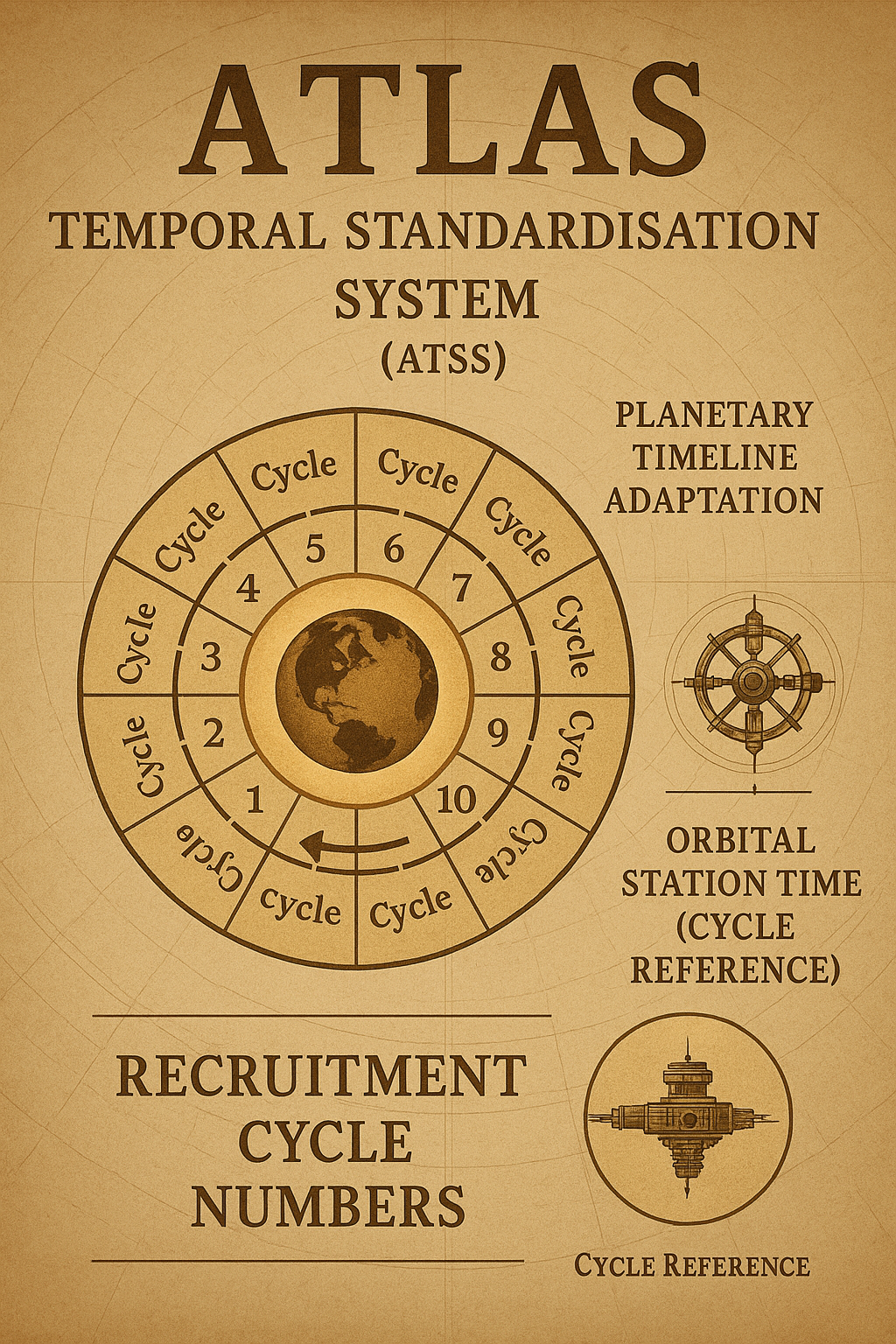
ATLAS Temporal Standardisation System (ATSS)
| Term | Meaning |
|---|---|
| Cycle | One 26-hour standard day across ATLAS |
| Division | 10 segments per Cycle (2.6 hours each) |
| Tick | Approx. minute-equivalent unit |
| Cycle 001 | First official day of a training class or posted deployment |
| Recruitment Cycle | Intake group label, e.g., Cycle 49 (Conor's class) |
| Local Time | Planetary reference used alongside ATSS, if needed (e.g., on Epsilon) |
1. Primary Timekeeping Standard: The Cycle System
ATLAS uses a “Cycle”-based system to provide uniformity across planets, stations, and ships—regardless of local solar days.
⏱ Cycle = 26 Hours (Standardised Galactic Day)
One Cycle = 26 hours, slightly longer than Earth’s 24-hour day to allow for universal synchronicity across species and gravity zones.
Each Cycle is divided into:
10 Divisions (equivalent to 2.6 hours each)
Further broken down into Ticks (comparable to minutes)
Example:
Cycle 118:02= Cycle 118, Division 2 (approx. hour 5.2 to 7.8)Cycle 001: Arrival Day, 0540 Hourswould be translated to ATSS:Cycle 1:02:0540if retaining legacy-style hour-minute notation.
2. Planetary Time Adaptation
Each ATLAS planet maintains local time (for civilian use, agriculture, etc.), but military and inter-org operations default to ATSS.
For instance, Epsilon Major may have a 29-hour local rotation, but recruits train on ATSS Cycle structure.
Dual-time notation may appear on interfaces:
Example:Local 19:00 / ATSS Cycle 14:06
3. Orbital Station Time (Cycle Reference)
Stations operate on Cycle Time only, synced to ATSS Central on the ATLAS Coreworld (e.g., Arcturos Prime or similar).
ARRIVAL DAY is always Cycle 001
Time is tracked as:
Cycle 001: Arrival DayCycle 007: Orientation MedicalsCycle 118:02for an encrypted medical log or incident timestamp.
4. Recruitment Cycle Numbers (Connor's Entry)
When ARIA reports:
“Connor Oakley, recruitment cycle 49.”
It references the cohort intake, not a literal date.